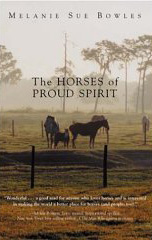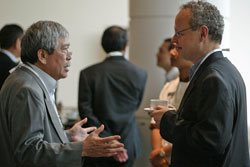 We’ve got Ag Day, Earth Day and now Solar Day. I hope we have a sunny one here in mid MO.
We’ve got Ag Day, Earth Day and now Solar Day. I hope we have a sunny one here in mid MO.
Move over Earth Day. There’s a new environmentally friendly semi-holiday coming up, and it’s none other than Solar Day. This day doesn’t just thank the sun for shining, though. It’s meant to educate the public about the benefits of using solar energy, and how residents can take advantage of solar options in their areas. Solar Day 2009 will be held all throughout the United States on the first day of summer, which lands on Sunday, June 21 this year. If your interest is piqued by this news, be sure to check out SolarDay.com, the official home of Solar Day, and a portal for all sorts of news on the solar industry.
Twitter on the Today Show
I caught The Today Show this morning, and I was excited to see an entire segment dedicated to the Twitter phenomenon! Some people love it; some people hate it. However, there is no denying that this social network is here to stay! The Today Show segment explains it as a cross between text and blogging with 140 characters. It goes to the masses, and it’s a great way to spread the word. It’s like an amped up word-of-mouth service, and it’s free!
Once apprehensive about it, I’m totally hooked! Do you Twitter? Who do you follow on Twitter? How do you decide who is worth listening to? Why do we care what’s going on in the lives of others? I’m a curious tweeter that wants to know! Watch this video here for tweeting vocab, tips and an explanation of this craze that’s hard not to love! Oh, and you can follow my tweets at http://twitter.com/AmandaNolz. Let’s be online social networking friends!
It
Visit msnbc.com for Breaking News, World News, and News about the Economy
Soybean Premiums.org Connects Companies & Suppliers
 There’s a new website to help connect soyfoods companies with soybean suppliers.
There’s a new website to help connect soyfoods companies with soybean suppliers.
The Soyfoods Association of North America (SANA) is committed to helping soyfoods companies connect with soybean suppliers. Soybeans are used to provide a wide range of products including edamame, soymilk, soy-based meat alternatives, tofu, tempeh, miso, shoyu, natto, soy yogurt, non-dairy frozen desserts, nutrition bars, chips, and cereals. Soyfood manufacturers in America welcome a supply of high quality soybeans that meet their diverse needs. The web site, www.soybeanpremiums.org, developed by the Illinois Soybean Association and sponsored by the Iowa Soybean Association and the Indiana Soybean Alliance, easily connects soyfood companies with growers of a wide variety of premium soybeans.
Brand New Member of Team ZIP
 Have you heard of Team ZIP? When you discover the power of protein in the land of lean beef, you can be sure that Team ZIP is close by! I recently signed up for the Brookings 40th Annual Half Marathon, and my sister and I are going to tackle 13.1 miles wearing Team ZIP jerseys (Beef is a great source of zinc, iron and protein!) There are hundreds of people that have teamed up with beef, and they blog about their experiences at the Team ZIP blog spot. Here is a description of this exciting group…
Have you heard of Team ZIP? When you discover the power of protein in the land of lean beef, you can be sure that Team ZIP is close by! I recently signed up for the Brookings 40th Annual Half Marathon, and my sister and I are going to tackle 13.1 miles wearing Team ZIP jerseys (Beef is a great source of zinc, iron and protein!) There are hundreds of people that have teamed up with beef, and they blog about their experiences at the Team ZIP blog spot. Here is a description of this exciting group…
The Power of Protein is all about experiencing the body benefits of eating beef and building lean muscle as you train for running, cycling, triathlon or other athletic events — or just in living a healthy, active lifestyle. If you are a beef eater and an athlete (weekend warriors welcome!), join Team ZIP (Zinc/Iron/Protein) to “Live the Brand” and demonstrate the “Power of Protein in the Land of Lean Beef.”
I’m excited to represent the beef industry in my first half marathon, and I’m thrilled to explore new marketing strategies to enhance the beef brand! Hey, a girl has to ditch her laptop once in awhile to get some fresh air; it might as well be for a good cause! To join Team ZIP or order a “Beef, It’s What’s For Dinner Jersey,” contact Daren Williams at dwilliams@beef.org. In the meantime, I will keep all of you updated on my training, my lean beef recipes and my progress as I promote the industry that I love! Beef, it’s what’s for dinner!
The OMSHville B.O.R.E Method
I’m addicted to several blogs that I read each day, including one titled OMSH, Oh My Stinkin’ Heck. OMSH is the creation of blogger and web designer, Heather Sanders, and she is full of great ideas to increase readership to your own personal websites. I ran across this blog post titled, “The OMSHville B.O.R.E. Method,” that I have found to be useful in my online efforts with blogs and social networks. OMSH recommends a three-step process called the B.O.R.E. Method that will help you succeed in your own online strategies.
First, OMSH says that bloggers need to be attentive to, and timely in, their correspondence. Interacting with the readers is a great way to create an online community. Take the time for the people that take time to read what you have to say. Second, don’t forget there is give and take. OMSH recommends several ideas to accomplish this including: Q&A sessions, giveaways, do-it-yourself tutorials, host an online forum, etc. Finally, the third step is to check your pride at the door. It’s important to keep learning and growing as fast readership grows.
For the full blog post, head to OMSH and read, “The OMSHville B.O.R.E. Method.” It was definitely a refreshing take on the classic blog lessons we have all learned along the way. And, while we’re talking about lessons learned, do you have any tricks you have picked up along the way to maintain a dynamic site for users to consume? Let’s compare notes; I’m excited to hear your thoughts!
Tweeting Biodiesel
 Want an example of how one group is using Twitter in a very coordinated way? Check out the National Biodiesel Board.
Want an example of how one group is using Twitter in a very coordinated way? Check out the National Biodiesel Board.
Today several of us have joined Twitter, to help answer your questions and discuss anything you feel like talking about in the biodiesel world. Whether you want to know if there is a biodiesel pump in your town, or have technical questions, or want to talk about anything biodiesel at all, we want to hear from you! If we don’t find you first, you can follow these National Biodiesel Board representatives on Twitter by clicking on the user name:
Biodiesel_Voice, Jenna Higgins/Director of Communications
Biodiesel_Media, Jessica Robinson/Senior Communications Specialist
Biodiesel_DC, Michael Frohlich/Wash D.C. Dir. of Comm. (federal updates)
Biodiesel_Tech, Jordan Thaeler/Technical Projects Manager
Biodiesel_Earth, Don Scott/Director of Sustainability
Biodiesel_Info, Bev Thessen/Information Coordinator
Hey Joe Jobe. I don’t see you on the list!
If you or your company needs some help figuring this whole Twitter thing out then contact me anytime. You can follow me on Twitter too.
Books Not Just for Horse Lovers
 Need a good book or two to curl up with in the evenings? I was recommended a few books recently that I thought I would share with all of you. These books are not just for horse lovers. They are for anyone who wants to be inspired. Interestingly, the author royalties from the sale of these books go to the care of the 63 rescue horses currently residing at the Proud Spirit Horse Sanctuary. These two novels are authored by Melanie Sue Bowles, who is incredibly passionate and dedicated to the equine industry. Her mission is to care for unwanted and elderly horses, and she is raising money through book purchases. Today, nearly 200 downtrodden horses reside at Proud Spirit.
Need a good book or two to curl up with in the evenings? I was recommended a few books recently that I thought I would share with all of you. These books are not just for horse lovers. They are for anyone who wants to be inspired. Interestingly, the author royalties from the sale of these books go to the care of the 63 rescue horses currently residing at the Proud Spirit Horse Sanctuary. These two novels are authored by Melanie Sue Bowles, who is incredibly passionate and dedicated to the equine industry. Her mission is to care for unwanted and elderly horses, and she is raising money through book purchases. Today, nearly 200 downtrodden horses reside at Proud Spirit.
 The first book is appropriately titled, The Horses of Proud Spirit, and her second novel is titled, Hoof Prints. Melanie’s first book details her mission to care for abandoned horses. The second novel takes readers on a journey back to the lives of their favorite horses. In a time where horse slaughter is banned, there is an increasing number of unwanted horses. I give kudos to those that dedicate their lives to caring for them. I just hope that books like these don’t create the image of horses as pets. Horses are animals; they live and die. It’s the circle of life in agriculture, and I hope these books don’t sway too much away from that message.
The first book is appropriately titled, The Horses of Proud Spirit, and her second novel is titled, Hoof Prints. Melanie’s first book details her mission to care for abandoned horses. The second novel takes readers on a journey back to the lives of their favorite horses. In a time where horse slaughter is banned, there is an increasing number of unwanted horses. I give kudos to those that dedicate their lives to caring for them. I just hope that books like these don’t create the image of horses as pets. Horses are animals; they live and die. It’s the circle of life in agriculture, and I hope these books don’t sway too much away from that message.
In any event, these books sound like they have a good message and a heart warming story in between the pages. To order, head to Amazon or Proud Spirit.
ARC Spring Deal
 A new post to the Agricultural Relations Council group on Facbook by Katana Ewbanks details some incentive offers to join and get others to join.
A new post to the Agricultural Relations Council group on Facbook by Katana Ewbanks details some incentive offers to join and get others to join.
The ARC Board is excited to announce our spring membership specials to our Facebook group members.
Individuals who become and ARC member between now and April 18, 2009 can join for the low price of $100. This is a $75 savings off our annual membership.
For companies who want multiple employees to join ARC, we have developed a laddered membership that will provide a significant cost savings. The laddered membership works like this:
* Member #1 — $175
* Member #2 — $100
* Member #3 and beyond — $75 each
We believe so much in the mission and focus of this organization we have even built in a contest for 2009 members:
* Personally recruit 3 ARC members in 2009 and your 2010 membership dues are free.
* Personally recruit 5 or more ARC members in 2009 and not only do you get your 2010 membership for free, your name is also entered in a drawing for a free registration to the 2010 ARC annual meeting.
There has never been a better time to join ARC. If you have any questions, or to get a membership form, visit us online at www.agrelationscouncil.org.
Get your application here (.doc) and tell ’em Chuck sent you.
Novus Sponsors World Ag Forum Roundtable
 Novus International was a primary sponsor of the first World Agricultural Forum (WAF) Asia Roundtable held last week in Phuket, Thailand.
Novus International was a primary sponsor of the first World Agricultural Forum (WAF) Asia Roundtable held last week in Phuket, Thailand.
 “At Novus, our corporate mission is to help feed the world affordable, wholesome food.” Novus president and CEO Thad Simons, pictured here (right) at the conference talking with Bangaran Saragih, Former Minister of Agriculture Indonesia. “Novus has a thriving business in Asia, we are proud to support the valuable work of the World Agricultural Forum and to play a key role in this historic, regional event.”
“At Novus, our corporate mission is to help feed the world affordable, wholesome food.” Novus president and CEO Thad Simons, pictured here (right) at the conference talking with Bangaran Saragih, Former Minister of Agriculture Indonesia. “Novus has a thriving business in Asia, we are proud to support the valuable work of the World Agricultural Forum and to play a key role in this historic, regional event.”
The main theme of the roundtable was “Balancing the Agricultural Bottom Line.” The event agenda focused on agriculture in the context of current global economic conditions and the regional impact to Asia.
Countries participating in the event included: Australia, Bangladesh, Belgium, China, France, Indonesia, India, Malaysia, Nepal, Netherlands, the Philippines, Switzerland, Thailand, Turkey and the United States.
Novus is going to be sending us some audio from this event to do a few more posts about it so stay tuned for more info.
Zimfo Bytes
- The Federal Agricultural Mortgage Corporation (Farmer Mac) announced that its Board of Directors has appointed Michael A. Gerber as President and Chief Executive Officer, effective immediately.
- Cooperatives Working Together announced that it has reached its goal of signing up a supermajority of the nation’s milk supply for two years (from Jan. 2009 through Dec. 2010), which will enable the self-help program to focus on reducing the current devastating imbalance in milk supply and demand. 67% of the nation’s milk supply has now committed to pay the 10 cent per hundredweight membership assessment.
- New Holland’s new line of finishing mowers complements the versatility of New Holland’s 28-hp to 60-hp compact and utility tractors. Click here for complete product information.
- The United Soybean Board (USB) recently was presented with the results of its independent return-on-investment study, which was conducted by Dr. Gary Williams, director of the Texas Agribusiness Market Research Center at Texas A&M University. The study found that the soybean checkoff has returned $6.40 in additional profits to U.S. soybean farmers for every dollar invested.

